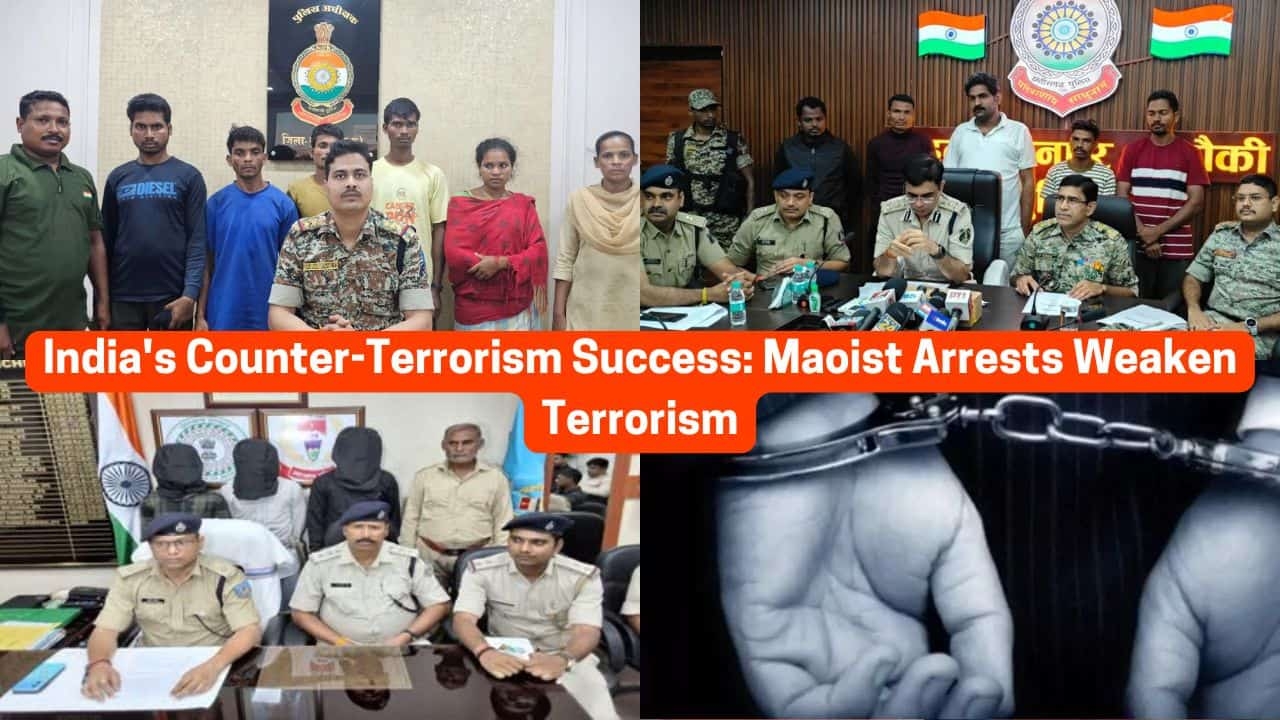India's Counter-Terrorism Success: Maoist Arrests Weaken Terrorism
14 Aug 2024 11:22:05

In an unrelenting campaign against Maoist terrorism, Indian security forces have made considerable headway to curtail the problem of left-wing extremism. According to SATP data, cases of arrest continue to flow thick and fast for the year 2024 alone, showcasing counter-terrorism operations carried out in various states.
Arrest Data: A Closer Look
The SATP data breaks down the arrests of Maoists month by month as follows:
January 2024: 22 arrests
February 2024: 36 Arrest
March 2024: 33 arrests
April 2024: 30 arrests
May 2024: 69 arrests
June 2024: 47 arrests
July 2024: 37 arrested
August 2024 (till 10th): 7 arrests
These figures constitute a significant setback to the Maoist network as it disrupts its operations and degrades its ability to wage war. The uniformity in arrests throughout the year reiterates the consistent pressure put by security forces over terrorists.
Impact of Arrests
These successful arrests have had a multifold effect on Maoist terrorism.
1. Cadre Weakening: Arrest of key leaders, mid-level commanders, and foot soldiers weakened the Maoist groups in terms of strength and capabilities. In fact, a decline in their organizational capacity and operational efficiency has been witnessed.
2. Operations Disruption: The arrests disrupted the communication networks, supply chains, and recruitment operations of the Maoists. Thus, in some sense, it hindered their operational capabilities with respect to planning and executing attacks, extortion of funds, and spreading their ideology.
3. Morale Boost: The arrest of such criminals is therefore a morale-booster not only for the security forces but also for local populations and builds confidence in a more hospitable environment for development and peace-building initiatives in affected areas.
4. Gathering of Intelligence: The arrests were of immense help in garnering vital intelligence about the activities, strategy, and hideouts of the Maoists. Armed with such information, security forces could carry out focused operations and preempt attacks, if any.
Challenges and the Road Ahead
While the arrest data paints a positive picture, the fight against Maoist insurgency is far from over. The following are some of the consecutive challenges:
1. Inaccessible and Hostile Terrains: Maoists typically operate from far-off and heavily forested areas thereby making it too difficult for security forces to trace and nab them.
2. Local Support: It is hard to refute that, at least in many areas, the Maoist forces do enjoy a degree of local support that provides them with shelter, food, and information.
3. Ideological Attraction: The Maoist ideology continues to attract a certain section of people, more so among the backward and deprived sections of society.
4. Guerrilla Attacks: Hit-and-run, ambush, and bomb traps or improvised explosive devices are Maoist guerrilla activities occupied with the incessant targeting of security forces as well as civilians.
To address these challenges, a multi-pronged approach is required:
1. Intensify Operations: Security forces have to sustain and further intensity of counter-insurgency operations with intelligence-led, targeted strikes and area domination.
2. Development and Welfare: The government has to step up the development and welfare processes in areas affected by Maoism, remove the basic causes of discontent, and provide alternative livelihoods to vulnerable communities.
3. Win Hearts and Minds: The government and the civil society organisations need to engage with the local communities to take on Maoist propaganda and propagate peace and reconciliation.
4. Modernization of Forces: The security forces need to be equipped with modern technology and training in tackling insurgency operations.
Conclusion
Data on arrests by the SATP is a lot of evidence that tremendous progress has occurred for the fight against the Maoist terror in India. Enough uninterrupted operations by the security forces have currently weakened the network of the Maoists.
However, there are still many challenges, and a comprehensive strategy in the field of counterterrorism is the way to have peace and stability in the long run in those areas. Resolution by the Indian government, along with local community support, presents hope for Maoist violence to end in the future.
Article by
Shomen Chandra
Sub Editor, The Narrative